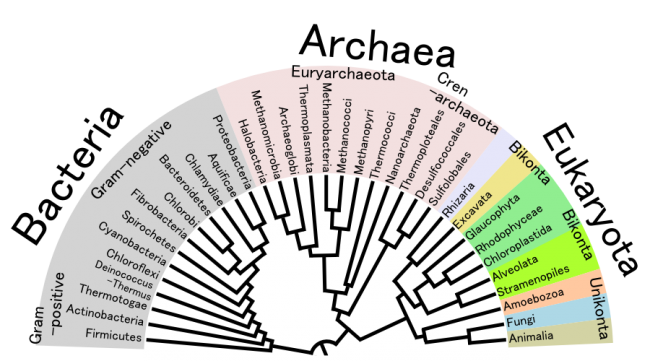Classification
Domain- Eukarya
The major domain of Eukarya consists of all multicellular
organisms. They have multiple organelles of which include
mitochondria and chloroplasts. The woodrat falls under this
domain because it is a multicellular organism and reproduces its
cells through cellular division of mitosis and meiosis
(Sidwell). To find out more about these two cellular division
processes, visit
here.

Kingdom- Animalia
Animalia’s major determination is that an organism is
heterotrophic, meaning they rely heavily on organisms for their
source of food. The opposite of this would be autotrophs, who
produce their own foods, such as sugars, through processes like
photosynthesis. Animalia are also multicellular. This group
contains a variety of animals, from sponges, to invertebrates,
to humans. Here are a few webpages on different animals of the
Damselfly, the
Yeti Crab, or the
Chicken!
Phylum- Chordata
Chordates posses a bilateral symmetry and post anal tail, which
both appear on this dusky-footed wood rat. Bilateral symmetry
implies being symmetrical on both sides of the body.

Class- Mammalia
A distinction of the mammals would be their fur or hair as well
as their mammary glands. The word “mammalia” is literally
translated as “teat” or “nipple,” thus implying their ability to
reproduce and produce milk for their long. The woodrat, as you
will learn on the Form and Function
page, has brown fur as well as mammary glands used for their
young after reproduction.
Order- Rodentia
In English, the term “roden,” which Rodentia derives from,
literally means gnawing. This is especially suiting for the wood
rat because they gnaw on sticks to make their homes, as seen in
the picture here. Other rodentia include
squirrels,
beavers, mice, and woodchucks.
Family- Cricetidae
Animals in this family are typically small in size, such as a
hamster. One characteristic that varies in this group is their
tail size (dependent on their bodies) and whether or not their
tail is covered in fur. A similar trait of all these small
rodents is their brown fur coat and white underbelly. Patterns
may vary between specific resources.
Genus- Neotoma
As mentioned on our home page, Neotoma
literally means “packrat.” This clearly fits our organism
perfectly because its nickname is the packrat!
Species- Neotoma
fuscipes
Finally, the woodrat is classified as this species! It
is small, bilaterally symmetric, and in a cellar aspect, goes
through mitosis and meiosis.
Home
Habitat
Gabriella Tuminello and Emma Conway of the University of
Wisconsin - La Crosse. Bio 203 - Spring 2014